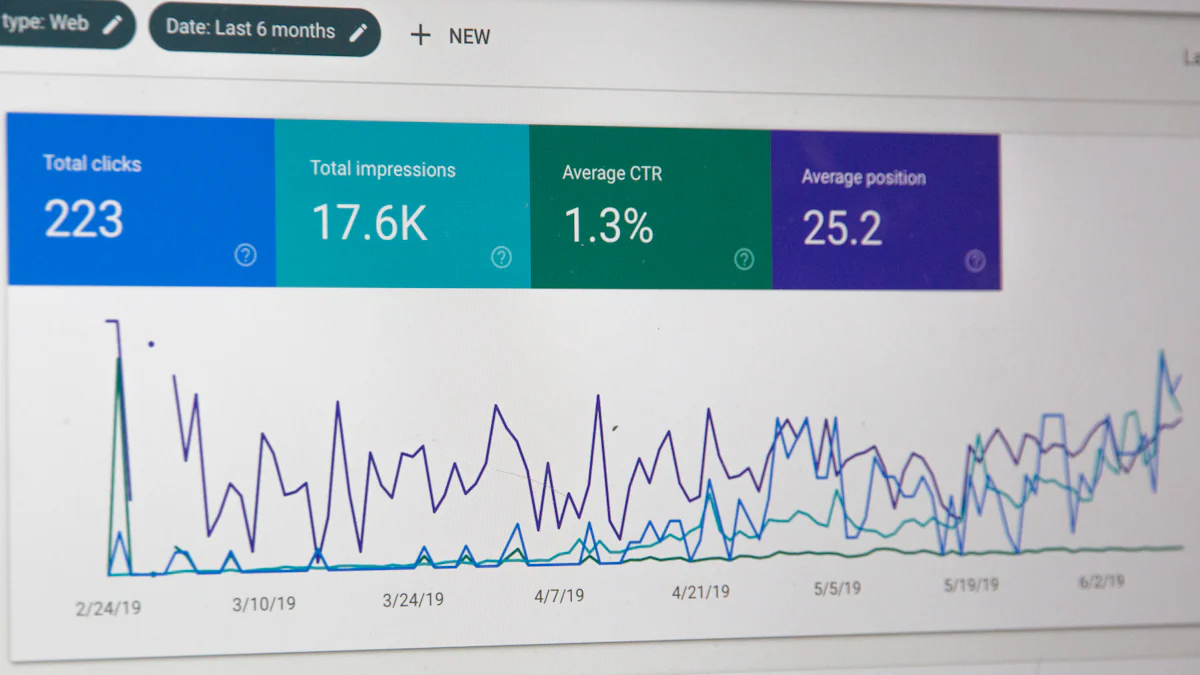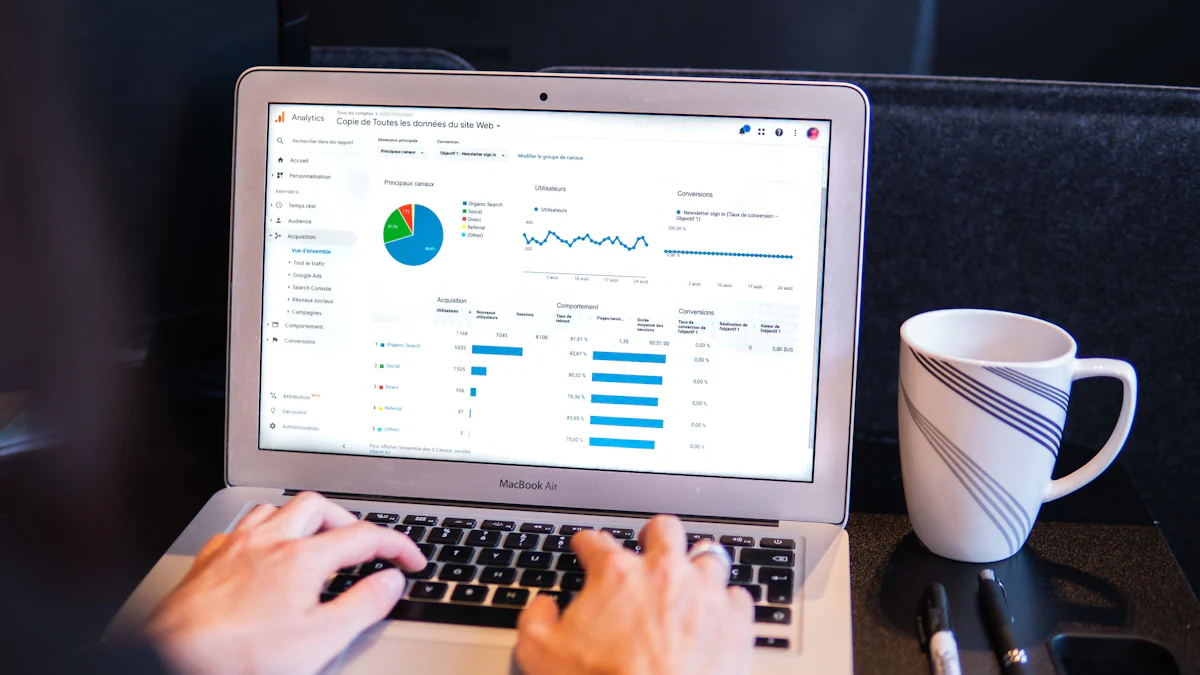The Path to Advertising Agency Excellence
In the realm of Advertising, understanding the significance of Advertising Metrics is paramount for any Advertising Agency striving for excellence. This guide offers a comprehensive overview of key points essential to mastering these metrics. By delving into the core purpose of this guide, professionals in the field can navigate the intricate landscape of advertising analytics with precision and finesse.
Understanding Advertising Metrics as an Agency : The Key to Success
Definition of Advertising Metrics
In the realm of advertising agencies, understanding the definition of Advertising Metrics is crucial for navigating the complex landscape of campaign analytics. These metrics serve as a quantifiable way to track performance and optimize campaigns effectively. By delving into the core essence of advertising metrics, professionals can gain invaluable insights into their campaign strategies.
Importance of Advertising Metrics
The importance of Advertising Metrics lies in their ability to help marketers understand campaign effectiveness and optimize future campaigns. By aligning these metrics with business objectives, agencies can accurately gauge the success and impact of their campaigns on the target audience. It’s not just about numbers; it’s about deriving meaningful conclusions that drive tangible results.
Types of Advertising Metrics
When it comes to types of Advertising Metrics, there are various key indicators that play a pivotal role in determining campaign success. From conversion rates to ROI and engagement metrics, each type offers unique perspectives on how well a campaign is resonating with the audience. Choosing the right mix of metrics is essential for optimizing campaigns and driving desired outcomes.
The Real Role in Advertising Agency Campaign Success
Metrics play a fundamental role in shaping the success trajectory of advertising agency campaigns. They provide invaluable insights that go beyond surface-level data points, offering deeper perspectives on what works and what doesn’t. By leveraging these insights, agencies can fine-tune their strategies for optimal performance.
Impact on Success
The impact of Advertising Metrics on campaign success cannot be overstated. They act as a compass, guiding agencies towards informed decision-making and strategic optimizations. Through meticulous tracking and analysis, agencies can uncover hidden opportunities for growth and improvement, ultimately leading to enhanced campaign performance.
Case Studies
Invaluable Insights from Digital Advertising Metrics
- Utilizing advanced digital ad metrics such as CTR and Google advertising metrics.
- Aligning metrics with business objectives for maximum impact.
- Optimizing campaigns based on data-driven decisions.
Key Metrics for an Advertising Agency to Measure Advertising Effectiveness

Conversions and ROI: Campaign Effectiveness
In the realm of advertising, Conversions and ROI stand as pillars of campaign effectiveness. Understanding these metrics is crucial for assessing the success of marketing endeavors.
Definition and Importance
Conversions, whether they be clicks, sign-ups, or purchases, signify meaningful interactions between the audience and the brand. Each conversion reflects a step towards achieving the campaign objectives. ROI, on the other hand, quantifies the return on investment generated from advertising efforts. It provides a clear picture of how effectively resources are being utilized to drive results.
How to Measure ROI
Measuring ROI involves calculating the ratio between net profit and the cost of the investment. By tracking revenue growth attributed to specific campaigns and comparing it to the associated costs, marketers can gauge the efficiency and profitability of their advertising initiatives.
Campaign Engagement and Reach
Engagement and reach metrics play a vital role in evaluating the impact of advertising campaigns on target audiences.
Tracking Engagement
Engagement measures such as likes, comments, shares, and click-through rates provide insights into how well an ad resonates with viewers. High engagement rates indicate that the content is compelling and relevant to the audience, fostering brand interaction.
Measuring Reach
Reach, often measured by impressions or unique views, quantifies how many individuals have been exposed to an ad. A broad reach ensures that a campaign has significant visibility among potential customers, increasing brand awareness and consideration.
Advertising Campaign Metrics
Various other key metrics contribute to assessing advertising effectiveness beyond conversions and engagement.
CPC and CPA
Cost Per Click (CPC) represents the expense incurred each time a user clicks on an ad, indicating how efficiently clicks are being generated. Cost Per Acquisition (CPA) reveals the average cost required to acquire a new customer through marketing efforts.
CTR and Bounce Rate
The Click-Through Rate (CTR) showcases the percentage of users who clicked on an ad after viewing it, reflecting its relevance and appeal. Conversely, Bounce Rate indicates the proportion of visitors who navigate away from a site after viewing only one page, highlighting user engagement levels.
By meticulously analyzing these key metrics encompassing conversions, ROI, engagement, reach, CPC, CPA, CTR, and bounce rate; advertisers can gain comprehensive insights into their campaign performance landscape.
Tools and Platforms for Tracking Advertising Agency Campaign Metrics and Effectiveness

When it comes to Google advertising metrics, professionals in the advertising industry rely on a robust set of features and benefits to track and optimize their campaigns effectively. These metrics offer valuable insights into campaign performance, audience engagement, and return on investment.
Google Metrics
Features and Benefits
- Comprehensive Data Analysis: Google advertising metrics provide a comprehensive overview of campaign performance, including click-through rates, conversion rates, and cost per acquisition.
- Real-Time Monitoring: Professionals can monitor campaign progress in real-time, allowing for immediate adjustments to maximize results.
- Audience Targeting: With detailed demographic data, advertisers can tailor their campaigns to specific target audiences for enhanced engagement.
- Integration Capabilities: Google advertising metrics seamlessly integrate with other analytics tools and platforms for a holistic view of marketing efforts.
How to Use
- Set Clear Objectives: Define specific goals for your ad campaigns, whether it’s increasing brand awareness or driving conversions.
- Choose Relevant Metrics: Select key metrics that align with your objectives, such as click-through rates for engagement-focused campaigns or conversion rates for sales-driven initiatives.
- Monitor Regularly: Keep a close eye on your campaign performance by regularly checking the metrics dashboard. Look for trends and patterns that can inform future strategies.
- Optimize Continuously: Use the insights from Google advertising metrics to optimize your campaigns continuously. Adjust targeting, messaging, or budget allocation based on performance data.
Moving on to Facebook and YouTube advertising metrics, these platforms offer unique features and benefits that cater to the specific needs of advertisers looking to maximize their reach and engagement.
Facebook and YouTube Metrics
Features and Benefits
- Audience Insights: Facebook analytics tools provide in-depth audience insights, allowing advertisers to understand demographics, interests, and behaviors for precise targeting.
- Competitor Analysis: Monitor competitor performance and benchmark your ads against industry standards using Facebook analytics tools.
- Customizable Dashboards: Create customized dashboards with real-time data visualization for quick decision-making based on Facebook analytics.
- Engagement Tracking: Track post-level engagement metrics on both Facebook and YouTube to gauge audience interaction with your content effectively.
How to Use
- Define Audience Personas: Utilize audience profile cards provided by Facebook analytics tools to create detailed personas based on user interactions with your brand.
- Monitor Competitors: Keep an eye on competitor activity using benchmarking features within Facebook analytics tools. Identify areas of improvement based on industry standards.
- Track Engagement Metrics: Regularly track likes, comments, shares, and video views using both Facebook and YouTube analytics tools. Adjust content strategy based on high-performing content types.
Lastly, leveraging survey data alongside advanced analytics tools is essential for gaining a comprehensive understanding of campaign effectiveness.
Survey Data and Analytics Tools
Importance of Survey Data
- Surveys provide qualitative insights into consumer preferences, attitudes, and behaviors that complement quantitative data from traditional analytics tools.
- By combining survey data with quantitative metrics like conversions or click-through rates, advertisers can develop a more nuanced understanding of customer motivations.
Best Analytics Tools
- YouTube Analytics Tools: Gain insights into video performance through views, watch time statistics, audience demographics analysis provided by YouTube analytics tools.
- Facebook Analytics Tools: Utilize Brandwatch’s Measure solution for post-level metric tracking across multiple networks along with competitor benchmarking features offered by Facebook analytics tools.
- Google Analytics: Dive deep into website traffic sources, user behavior patterns through page views analysis using Google Analytics platform.
Incorporating these diverse tools into an integrated measurement strategy allows advertising agencies to track performance comprehensively across various digital channels.
Best Practices for Advertising Effectiveness
Setting Up KPIs
When Advertising Agencies embark on a new campaign, setting up Key Performance Indicators (KPIs) is crucial to measure success effectively. These indicators act as guiding stars, illuminating the path towards achieving campaign objectives and maximizing Advertising Effectiveness.
Importance of KPIs
KPIs serve as compasses in the vast sea of advertising metrics, providing clear direction on what to measure and how to gauge progress. By defining specific KPIs aligned with business goals, agencies can focus their efforts on areas that drive tangible results and impact.
How to Set Up
To establish robust KPIs, agencies must first identify overarching campaign objectives and break them down into measurable components. This involves selecting relevant metrics that directly reflect progress towards the desired outcomes. Clear, concise, and actionable KPIs are essential for tracking performance accurately.
Tracking and Analyzing Data
In the realm of advertising effectiveness, tracking and analyzing data go hand in hand to unveil valuable insights that shape future strategies.
Best Practices
Implementing best practices in data tracking involves regular monitoring of key metrics, identifying trends, and adjusting strategies accordingly. By maintaining a proactive approach to data analysis, agencies can stay ahead of the curve and make informed decisions based on real-time insights.
Common Mistakes
One common pitfall in data analysis is overlooking the holistic view of campaign performance. Focusing solely on individual metrics without considering their interconnectedness can lead to skewed interpretations and misguided optimizations. Avoiding this tunnel vision ensures a comprehensive understanding of campaign effectiveness.
Improving Advertising Effectiveness
Continuous improvement lies at the heart of enhancing Advertising Effectiveness for agencies striving for excellence in the digital landscape.
Continuous Improvement
By embracing a culture of continuous learning and adaptation, agencies can iterate on past successes and failures to refine their strategies continually. This iterative process fosters innovation, agility, and resilience in an ever-evolving advertising ecosystem.
Case Studies
Drawing inspiration from real-world examples through case studies provides valuable lessons for improving advertising effectiveness. Analyzing successful campaigns offers insights into best practices, while dissecting failures uncovers valuable learnings that shape future strategies.
Incorporating these best practices into daily operations empowers advertising agencies to navigate the dynamic landscape of digital marketing with confidence and precision.
- To summarize, mastering advertising metrics is the cornerstone of success for advertising agencies.
- Continuous measurement is vital to track progress and make informed decisions for future campaigns.
- Looking ahead, embracing emerging technologies and data-driven strategies will be key for staying ahead in the competitive advertising landscape.



